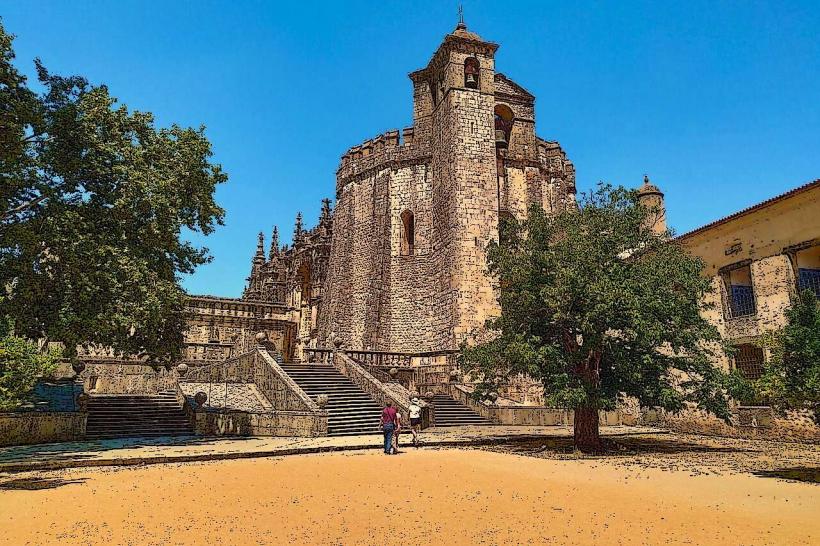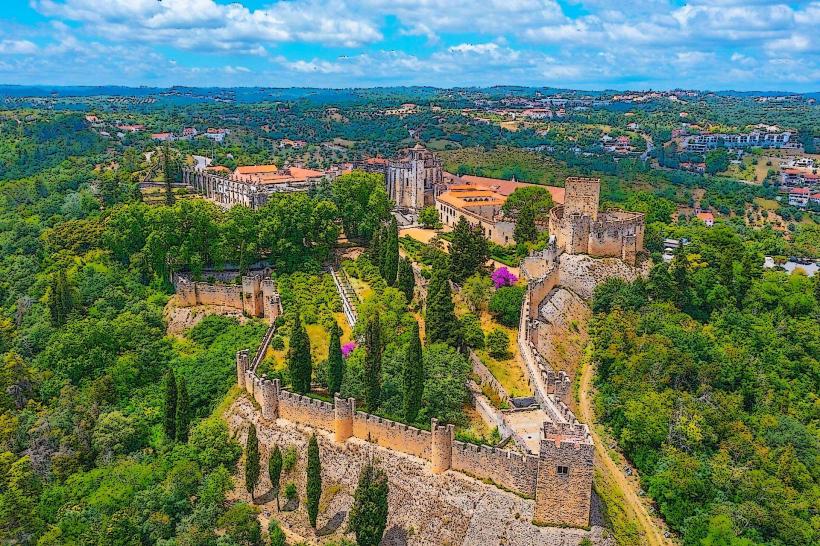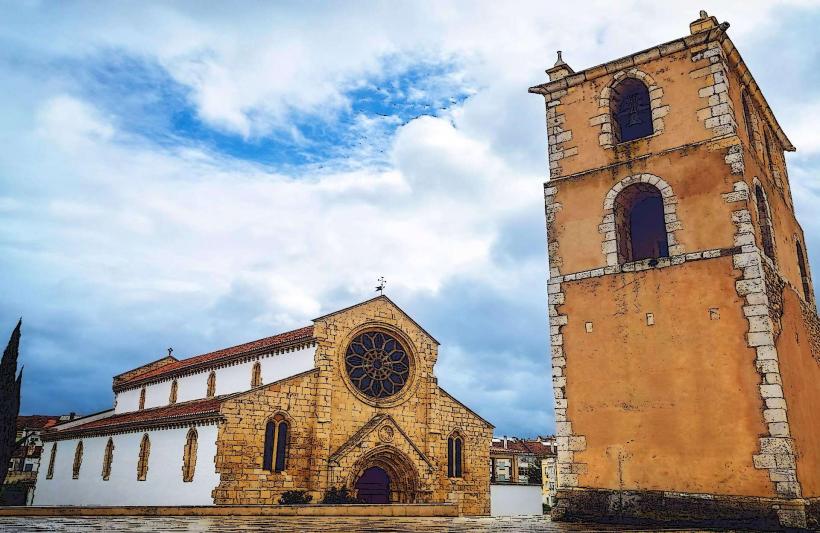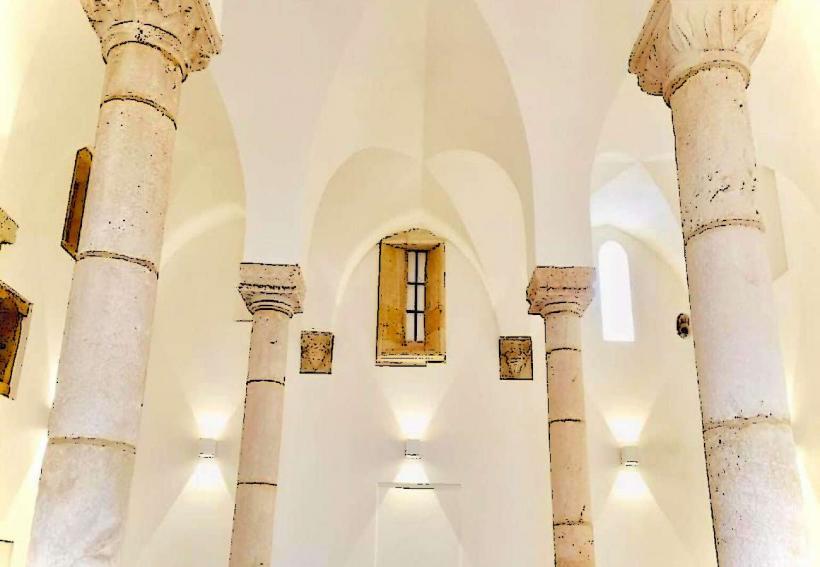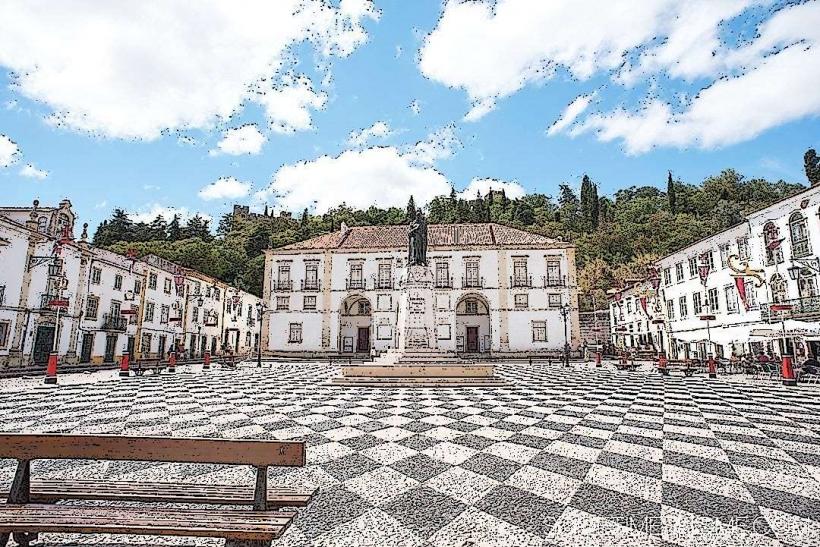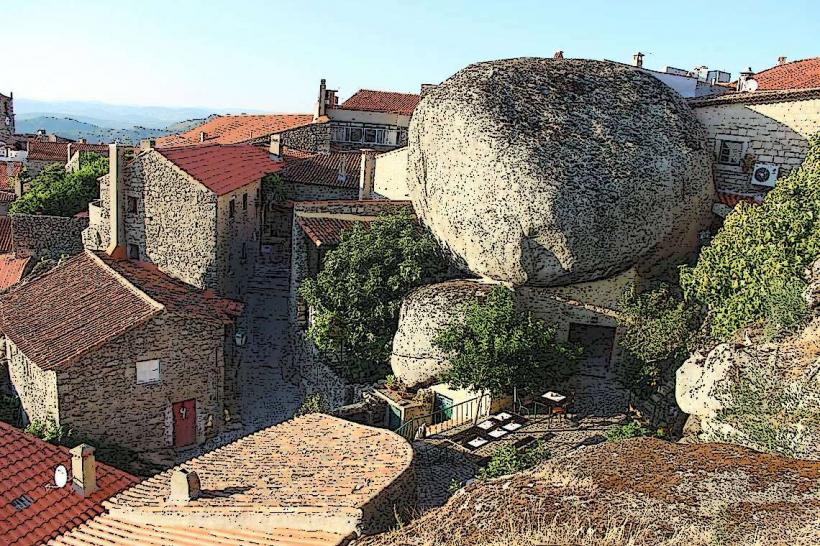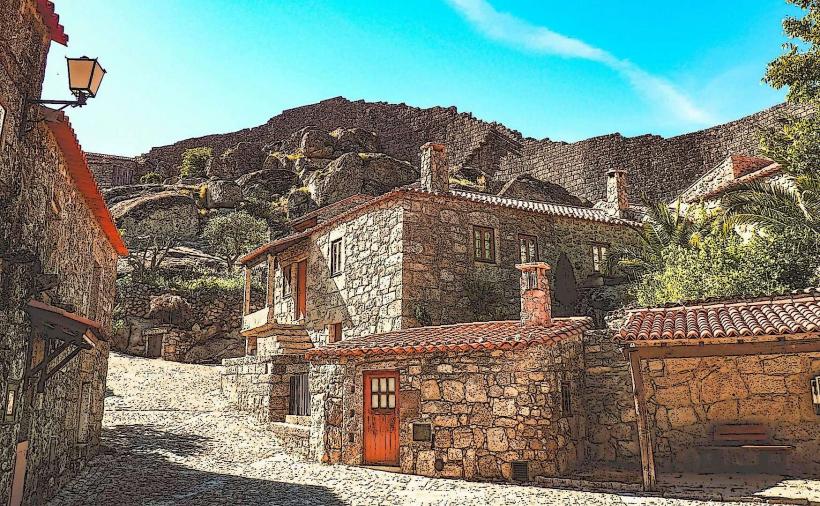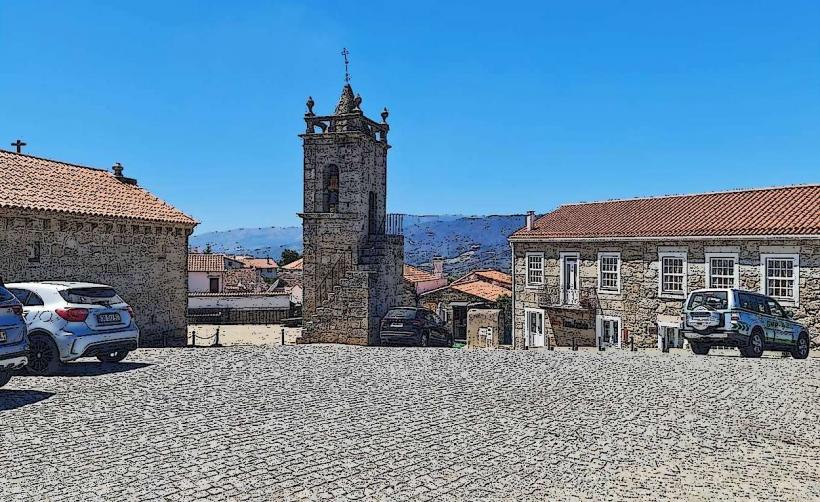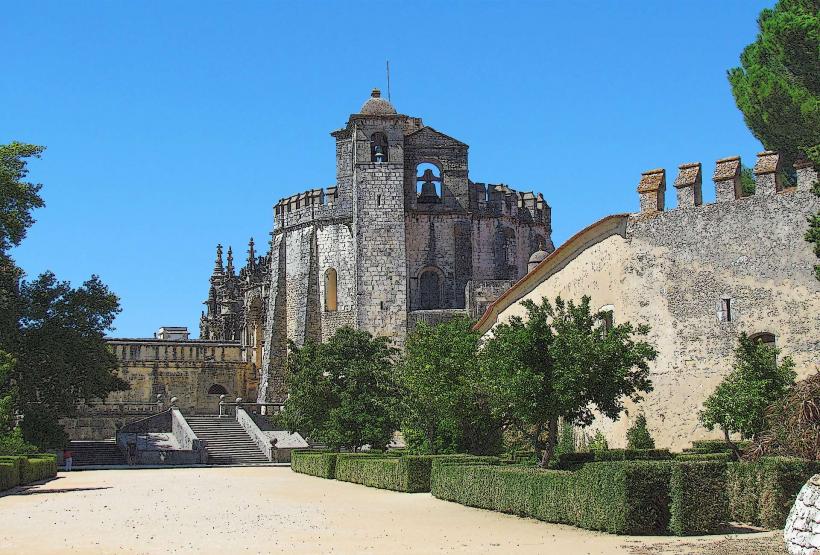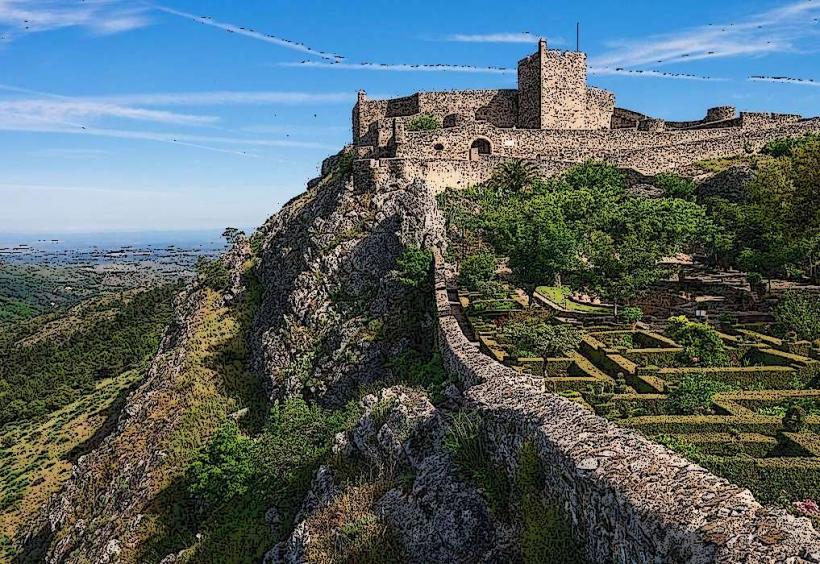Information
Landmark: Aqueduct of PegõesCity: Tomar
Country: Portugal
Continent: Europe
The Aqueduct of Pegões (also known as the Pegões Aqueduct) is a historical water supply system located in the region of Alentejo, Portugal. It is one of the most impressive examples of engineering from the 18th century, constructed to address the water needs of the town of Évora. The aqueduct played a significant role in the development and sustenance of the city, providing water to its inhabitants and supporting agricultural activities in the surrounding areas.
1. Historical Background
- Construction: The Aqueduct of Pegões was built in the late 16th century to the early 17th century (its precise completion date is uncertain but commonly dated to around 1590), during the reign of King Philip I of Portugal (Philip II of Spain). The project was initiated by the local authorities of Évora, as the city was facing increasing demand for water, especially to support its growing population and agriculture.
- Design and Purpose: The aqueduct was designed to bring water from the Pegões River (also known as the Pegões Spring), which is located about 18 kilometers (11 miles) to the northeast of Évora. The main goal was to address the city's need for a reliable and sustainable water supply system, which was particularly crucial given the hot, dry climate of the region.
- Architectural and Engineering Features: The aqueduct’s construction involved sophisticated engineering techniques for its time, including the use of arches, stone bridges, and underground channels. The design allowed it to traverse undulating landscapes and bring water over long distances to Évora, reaching the city through an elaborate network of aqueducts and water storage basins.
2. Architectural and Engineering Significance
The Aqueduct of Pegões is one of the finest examples of early modern aqueduct architecture in Portugal, featuring impressive engineering solutions and elegant structures. Its aesthetic appeal, combined with its functional purpose, makes it a notable landmark in the region.
- The Arch System: The aqueduct is perhaps most famous for its long rows of arches, which create a visually striking presence across the countryside. These arches span across ravines, valleys, and rolling hills, offering a combination of functional utility and scenic beauty. The water would flow through channels on top of the arches, ensuring the water could flow downhill to Évora.
- Construction Material: The aqueduct is primarily built of stone, particularly limestone, which was readily available in the region. This choice of material has contributed to the aqueduct’s durability over time. The use of stone also added an aesthetic quality to the structure, giving it a monumental, timeless feel.
- Bridge-like Arches: The most iconic part of the aqueduct is its bridge-like arches, which are tall and graceful, stretching over the land with a sense of elegance. The height of these arches varies, but some can be as high as 30 meters (about 100 feet), showcasing the ambition and scale of the project.
- Water Channels: The aqueduct channels were built with a slight incline to allow gravity to carry water through the system. The water was carried in stone-lined channels, designed to protect it from evaporation and contamination. At certain points, the aqueduct also included water reservoirs for storage, ensuring that water could be accessed even during dry spells.
3. The Role in Évora’s Development
- Water Supply to Évora: The Aqueduct of Pegões was crucial for the development of Évora during the early modern period. Prior to the aqueduct, the city relied on wells, fountains, and rivers to supply water, but these sources were often insufficient, especially during dry spells.
- Agriculture: The aqueduct not only supplied water for the city’s population but also supported agricultural activities in the surrounding areas. Irrigation was essential in the Alentejo region, which is known for its agriculture, including the cultivation of cereals, olive trees, and grapes. The aqueduct’s provision of water allowed for more reliable farming and supported the local economy.
- Urban Development: The availability of water contributed to the growth and urbanization of Évora. As water became more reliable, more people could settle in the city, and the establishment of public fountains, baths, and other amenities improved the quality of life.
4. Cultural and Historical Significance
- Symbol of Engineering and Innovation: The Aqueduct of Pegões is a symbol of the engineering prowess of the late 16th and early 17th centuries. It was one of the major infrastructural achievements in Portugal at the time and is considered one of the best examples of aqueduct construction in the Iberian Peninsula.
- UNESCO World Heritage: Évora, as a whole, is a UNESCO World Heritage Site, and the aqueduct is an integral part of its historical landscape. The town itself contains several well-preserved Roman, medieval, and Renaissance buildings, and the aqueduct complements the historical value of the area.
- Tourist Attraction: Today, the Aqueduct of Pegões is a popular tourist attraction, especially for those interested in historical architecture and engineering. Visitors can explore its long stretches of arches, taking in the magnificent views of the Alentejo countryside. The aqueduct is also a photographic landmark, admired for its beauty and scale.
5. Modern Day
- Preservation: While much of the aqueduct is well-preserved, some sections have fallen into disrepair due to erosion and time. Nonetheless, many parts of the aqueduct, particularly those near the town of Évora, remain intact and still functional, serving as a reminder of the ingenuity behind its construction.
- Public Engagement: The aqueduct is part of various heritage and conservation projects, helping to raise awareness of Portugal’s historic infrastructure and engineering feats. Educational programs and guided tours offer visitors insight into the aqueduct’s historical significance and its role in shaping the landscape.
6. Conclusion
The Aqueduct of Pegões is a monumental example of historical engineering and architecture in Portugal. Its graceful arches, innovative design, and strategic importance make it a remarkable achievement of the 16th century. The aqueduct’s ability to provide a consistent water supply to the city of Évora helped foster both urban and agricultural development in the region, and it remains a key element of the town’s cultural and historical heritage. Today, it stands not only as a symbol of Portugal’s past but also as a testament to the timeless need for water infrastructure and civil engineering in sustaining communities.

